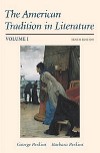A master of the lyric, E. E. (Edward Estlin) Cummings wrote some of the most unique poetry in the twentieth century. His experimentation with the design of the page -- the placement of the letters and words in sometimes discordant arrangements, almost as if splattered, stacked, shuffled, or sprinkled across a page -- evokes an iconoclast who rejects traditional forms. His lyrical pieces, however, belie the playful, witty juxtapositions of form and order. The son of the pastor of the Old South Church in Boston and a professor of English at Harvard, Cummings completed both a B. A. and Masters Degree before entering World War I in an ambulance corps. Held in a French detention camp through a series of errors, allegedly for "treasonous correspondence," he was released after three months. Returning to the United States, he enlisted in the U. S. Army. He explored his experiences of the war in a novel, The Enormous Room (1922). Attracted to European settings, Cummings returned to France for training in painting. He continued his studies in New York where he pursued a career in fine arts as a painter. Nevertheless, he continued to write volumes of poetry ranging from the lyrical to the satirical. He also penned essays and plays, in addition to fiction and poetry. Additional works include Tulips and Chimneys (1923), & and XLI Poems (1925), Him (1927), No Title and Anthropos: The Future of Art (1930). Emmi and The Red Front appeared in 1933 followed by Tom and No Thanks in 1935, and Collected Poems in 1938. While Cummings also served as an essayist for Vanity Fair and other journals, in the 1940's and 1950's he published some of his most mature works for which he received numerous national and international literary awards. 1 x 1 appeared in 1944 followed by an introduction to a collection of Krazy Kat comic strips in 1945. In 1946 he published Santa Claus (A Mortality). During this period, Cummings was selected for a fellowship from the American Academy of Poets and received a Guggenheim Fellowship in 1951. The following year, Cummings accepted a post as the prestigious Charles Eliot Norton Professorship at Harvard University. Additional acclaim included recognition by the National Book Awards, the Bolinger Prize in Poetry and the Boston Arts Festival Award. Following his death from a brain hemorrhage in 1962, Cummings's works continued to appear posthumously, including 73 Poems (1963), Fairy Tales (1965), Selected Letters of E. E. Cummings (1969), and Complete Poems: 1913 - 1962 (1972). |



 2003 McGraw-Hill Higher Education
2003 McGraw-Hill Higher Education